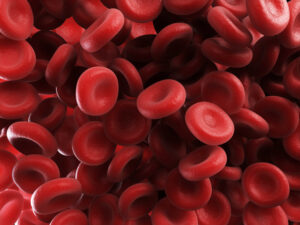RBC deformability—the ability to alter shape and squeeze through capillaries and other microvascular tissues—is essential for oxygen delivery to tissues and is a key measure of RBC quality. Since the lifespan of RBCs is around 120 days, donor RBCs consist of cells of varying ages. Younger RBCs are less dense and more flexible, while older RBCs have reduced deformability and are denser. Few studies, however, have assessed the contribution of donor age and sex on the deformability characteristics of stored RBCs. To address this, researchers tested red cell concentrates from four groups of donors—15 male and 15 female teens (ages 17-19 years) and 15 male and 15 female seniors (>75 years). Younger and older RBCs were separated using density gradient centrifugation after 5, 14, 28 and 45 days of storage, and deformability measurements were assessed by ektacytometry. Donor age, rather than sex, was the primary factor influencing deformability. After 14 days of storage, RBCs from teens were more rigid than RBCs from senior donors, regardless of the age of the RBCs (p<0.05). Red cell concentrates from teen males had the highest level of older, poorer quality cells compared to the other groups. RBCs from females had higher Ohyper values (a measurement of osmolality and RBC elongation) than males in line with other studies showing higher estradiol in females positively affects RBC deformability. Although more research is needed, age-based donor selection and ektacytometry values may be used to improve transfusion outcomes.
References:
- Mykhailova O, Brandon-Coatham M, Hemmatibardehshahi S, Yazdanbakhsh M, et al. Donor age contributes more to the rheological properties of stored red blood cells than donor sex and biological age distribution. Blood Adv2025; 9 (4): 673–686.
- K Matthews and H Ma. How donor age affects RBC deformability in storage. Blood Adv2025; 9 (4): 818–819.

